Single Photon Detector Module (SPDM) Project
Introuction
Detectors of extremely low light levels (photon counters) in the VIS-NIR range, based on semiconductor avalanche photodiodes, are widely used in quantum cryptography, communications and informatics, random number cryptogenerators, security cameras, medical diagnostic methods and molecular scientific research. The technology of producing semiconductors, specifically silicon photon counters, has become a very dynamic research area. This type of detector is sensitive in a broad wavelength range (400-1100nm), with the quantum efficiency and gain characteristics superior to conventional photomultipliers tubes. Their robustness, immunity to magnetic field, small physical size and low power dissipation, in addition to the possibility to be implement in a single silicon chip, open the opportunity for many applications.The aim of this project is the development of a compact optoelectronic module including the SPAD detector and the associate active quenching circuits to be used as a photon counter in diagnostic, analytical and cryptographic methods based on extremely low light level detection. In addition to optimum detection characteristics, low power requirement, low cost of the production and small dimensions of the detector module are required. The final goal is commercialization of the developped technology.
For the purpose of this project we have developped original setups for measuring:
- absolute quantum efficiency;
- single photon timing jitter;
- afterpulsing probability.
Mini SPDM module - a first prototype
A setup for evaluating avalanche quenching circuits
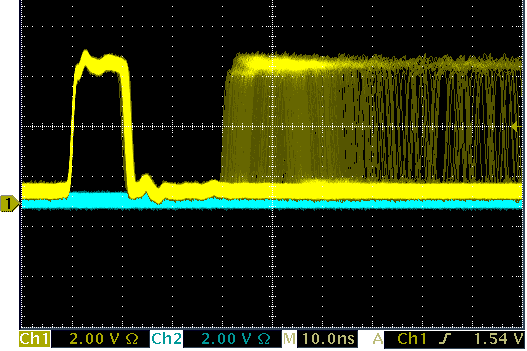
Output of the Mini-SPDM module prototype when measuring randomly arriving photons.
Picture shows many single photon events drawn one on top of the other. The trigger photon is shown on the left. If second photon arrives shortly after it will populate the bunch on the right. The ultimate photon pair resolution (or the "dead time") of this prototype is 30ns. It means that if a photon is detected and if the next photon arrives in less than 30 nanoseconds this second photon will not be detected.
Single photon detection module prototype based on a silicon SPAD:
front side (left) and back side (right).
SPDM-P500 photon counting module - the final prototype/product
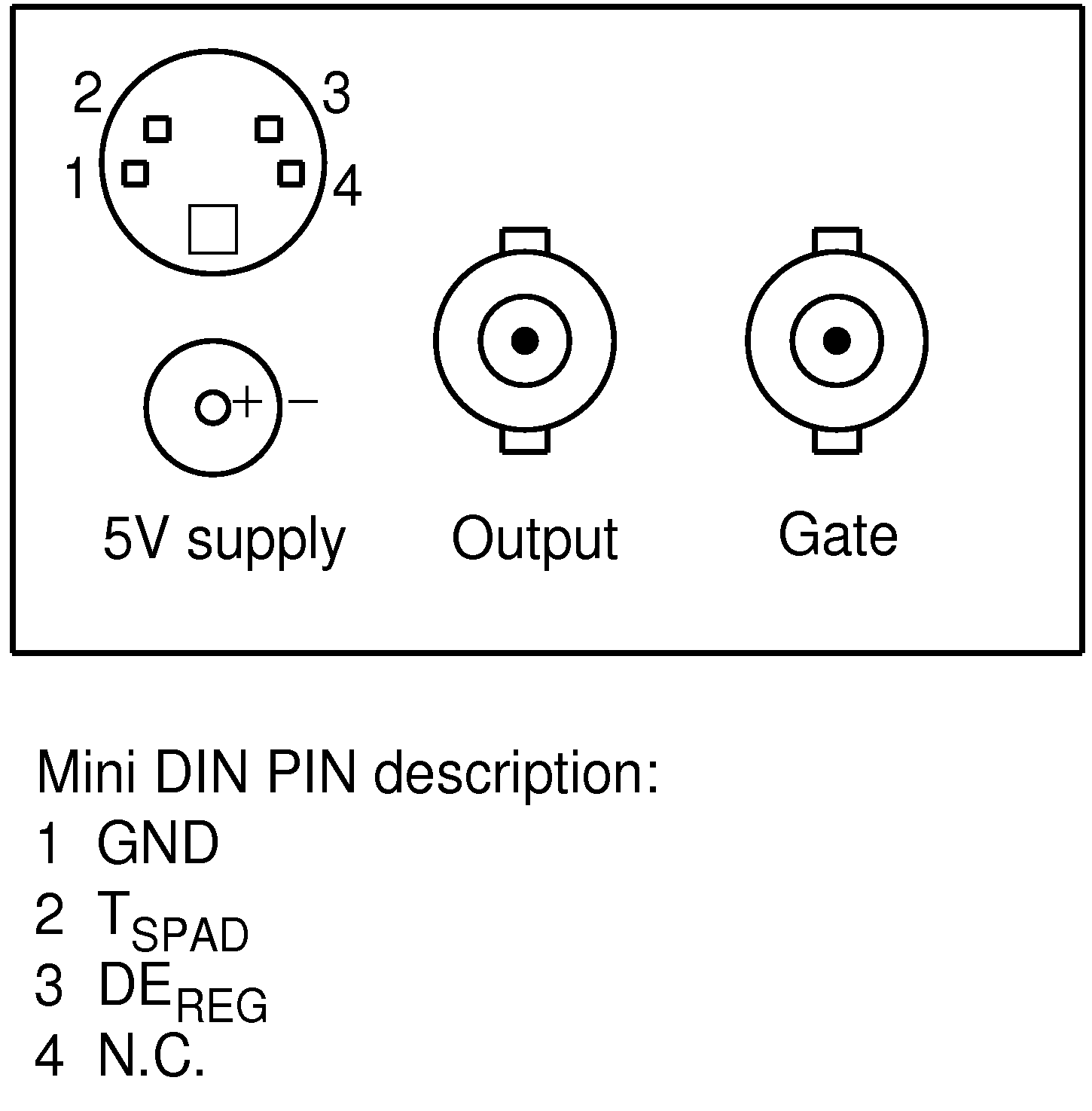
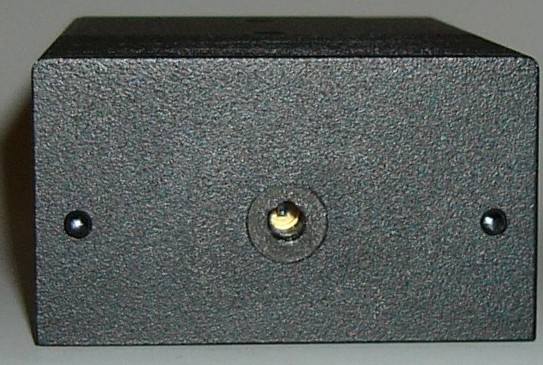
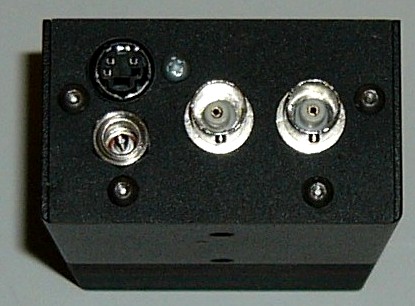
The final Single photon detection module prototype/product based on a silicon SPAD:
Side view, dimensions 110x36x64mm (left) and description of connectors (right).
The casing is made of high-quality extruded dur-aluminium with double layer finish:
black eloxidation and rugged plasification.
Typical performance characteristics include:
| Peak detection efficiency: | 37% typ. @810nm. |
| 70% typ. @550-650nm. | |
| Dead time: | 21ns |
| Dark counts: | <50cps typ. |
| Afterpulsing probability (100-500ns): | <0.35% typ. |
| Time resolution: | 160ps FWHM typ. |
| Maximum random (Poissonian) count frequency: | >30MHz |
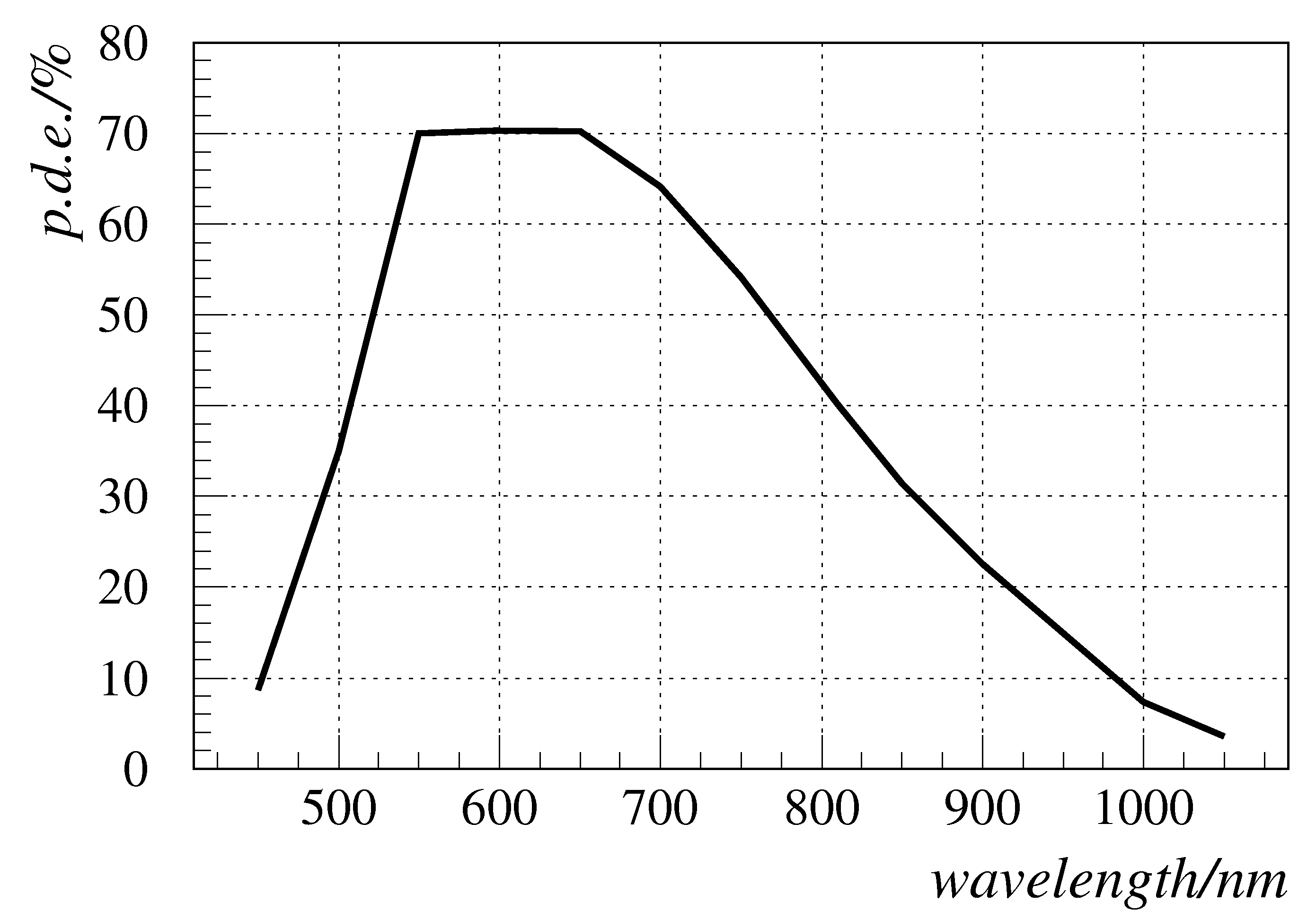
Photon detection efficiency (p.d.e.) of the SPDM
The module features:
- Output (quadratic pulse 10ns FWHM, 1ns rise/falling time, 50 Ohm impedance, TTL/HCMOS compatible);
- Gate input (TTL/HCMOS cmpatible, internal impedance 1kOhm);
- Mini DIN jack featuring:
- SPAD temperature monitor output (pin 2, internal impedance 1kOhm);
- Detection efficiency regulating input in the range 0 to nominal (pin 3, internal impedance 1kOhm).
- A single +5V (2A peak, <0.7A continuous) power input;
- Physical dimensions (HDW): 64x36x110mm;
- Weight: 350g.